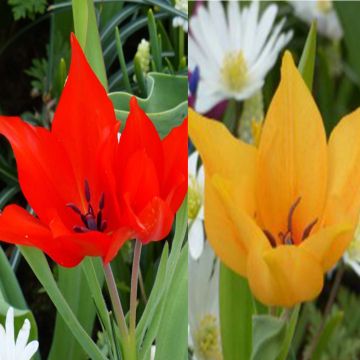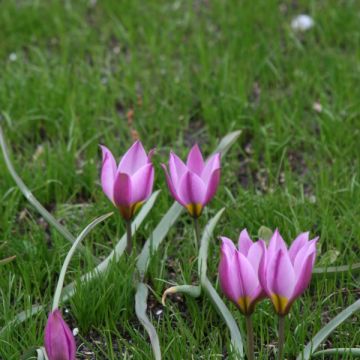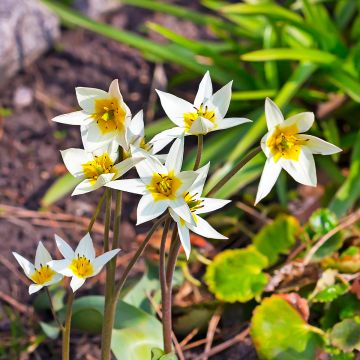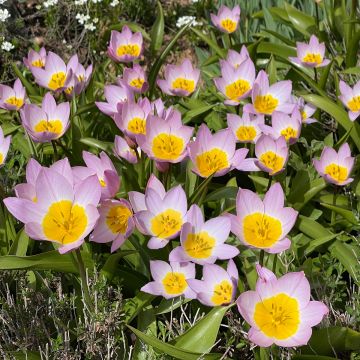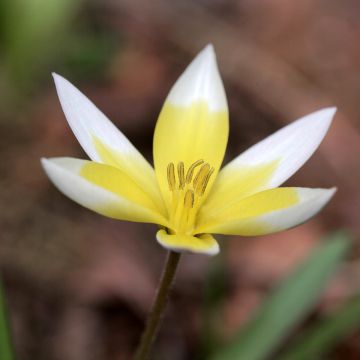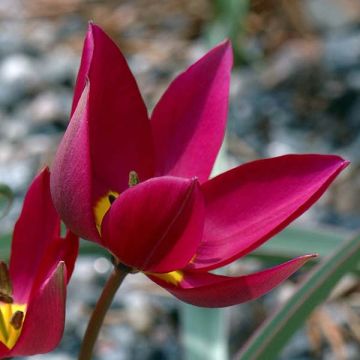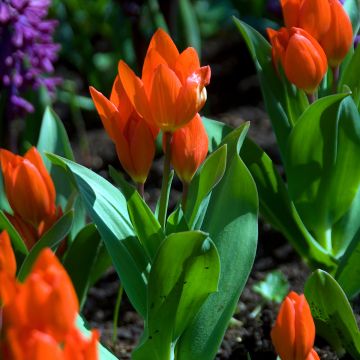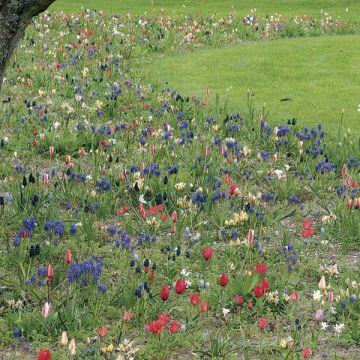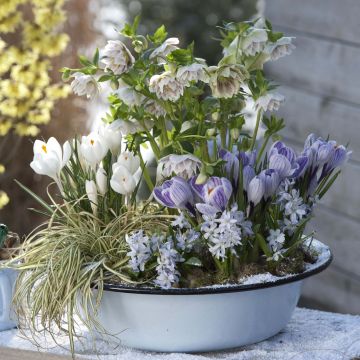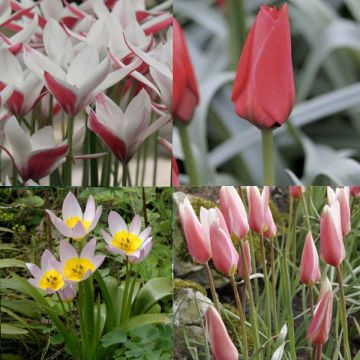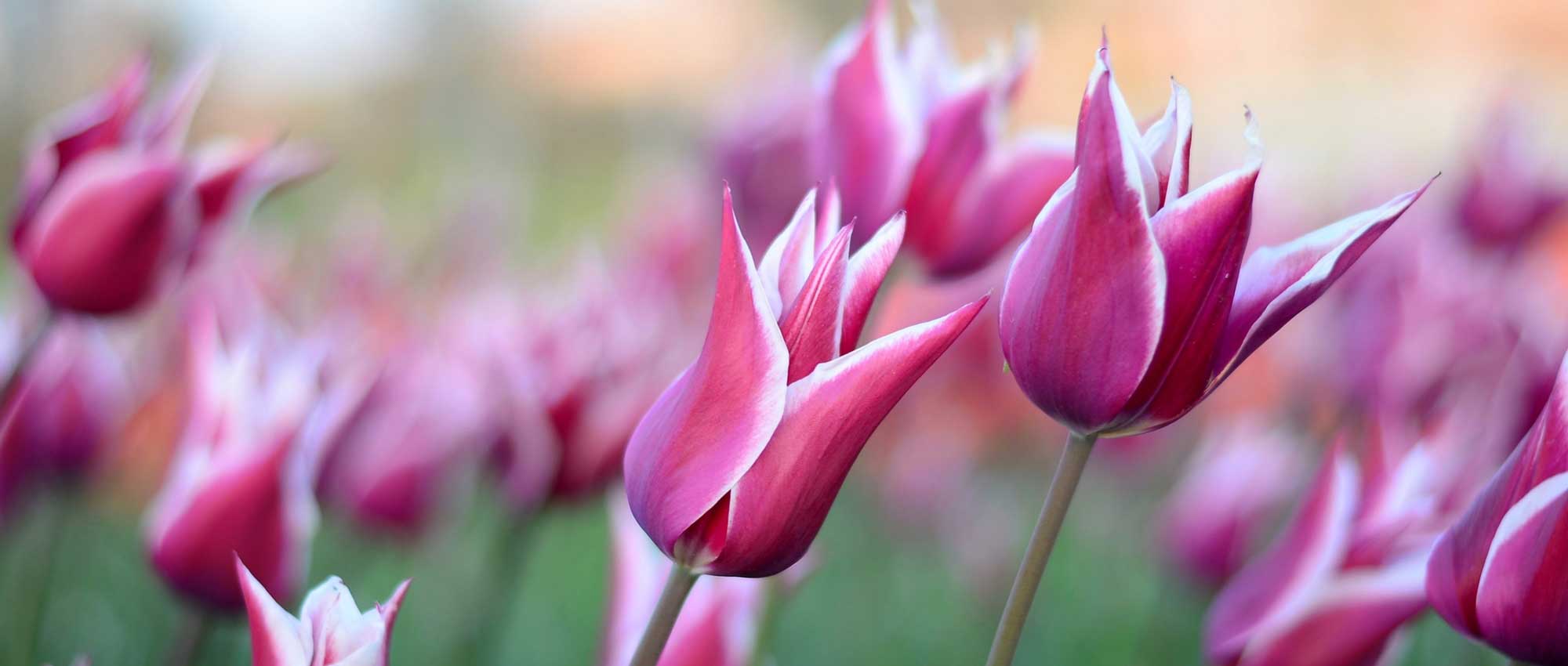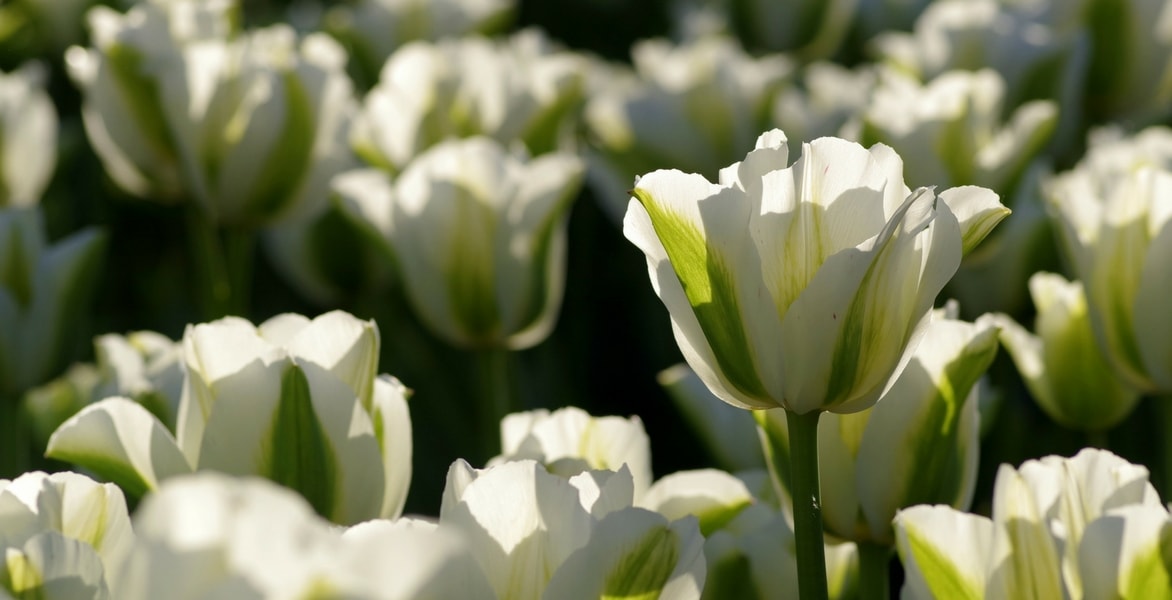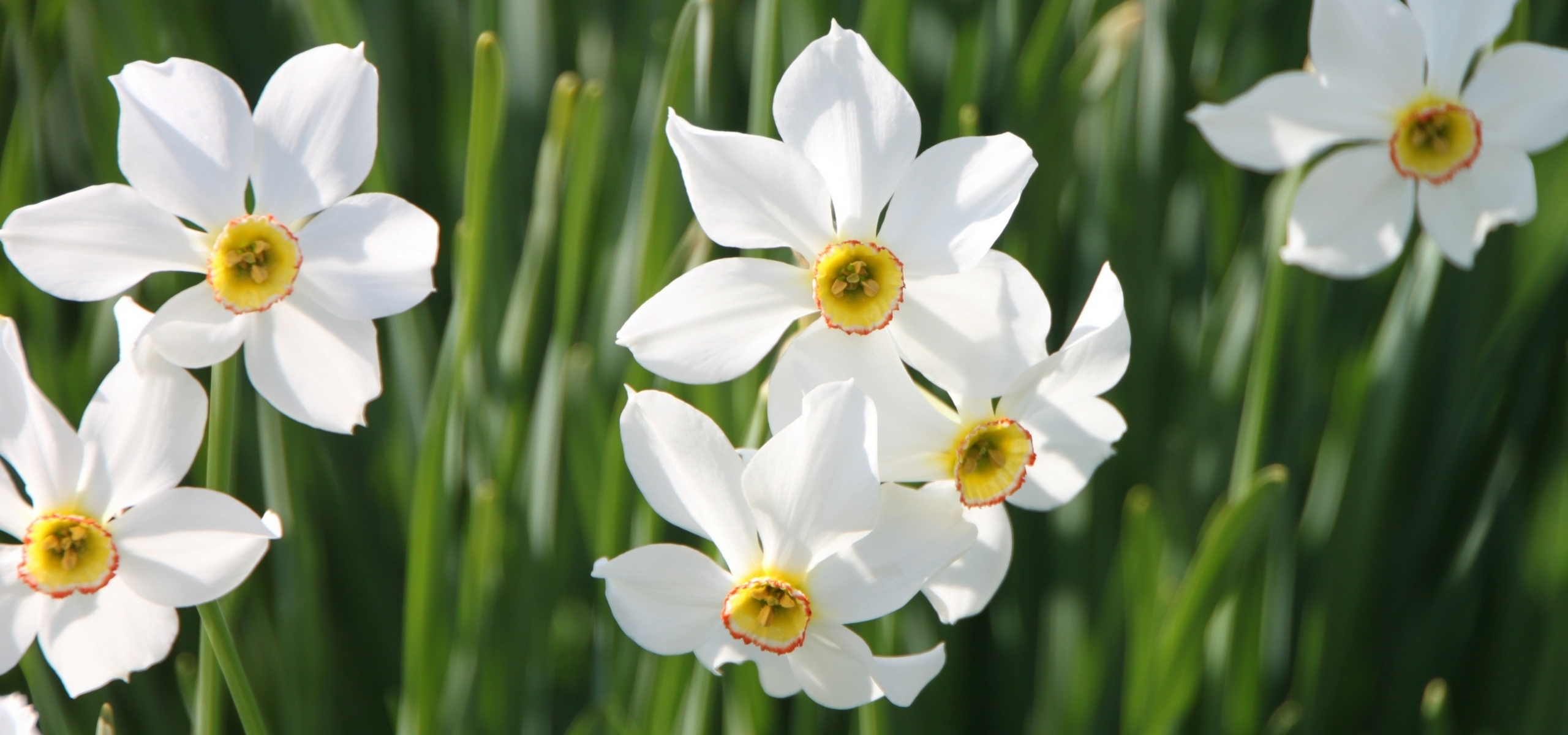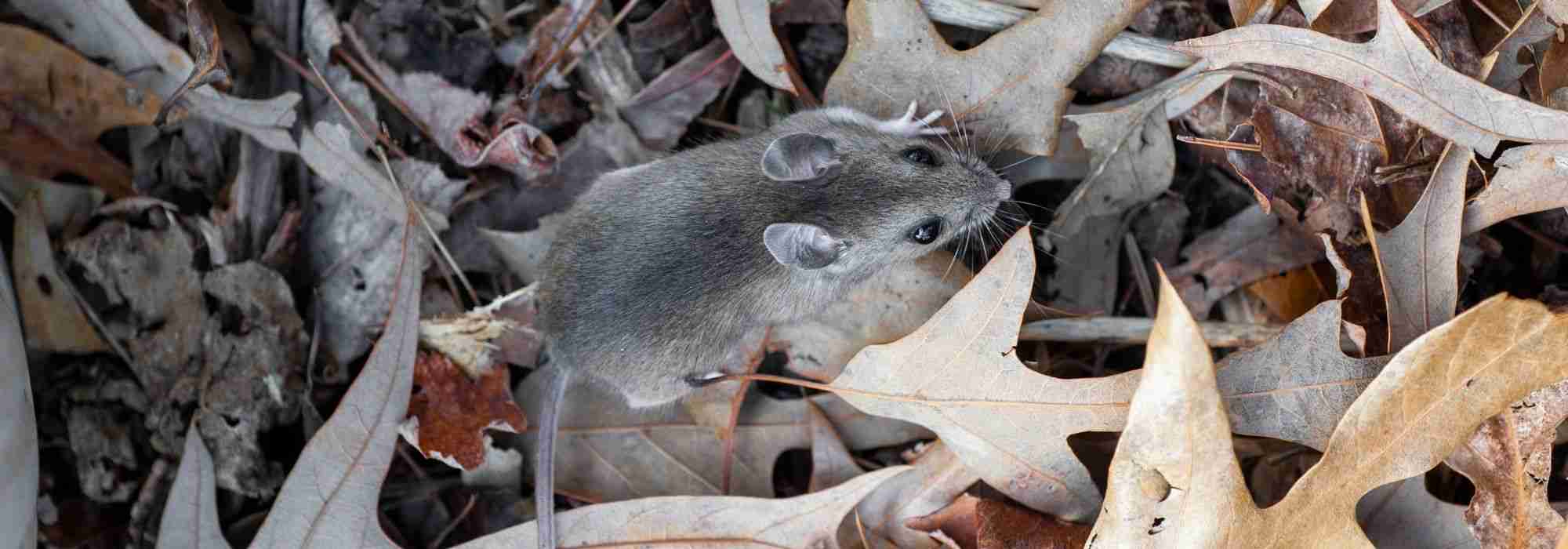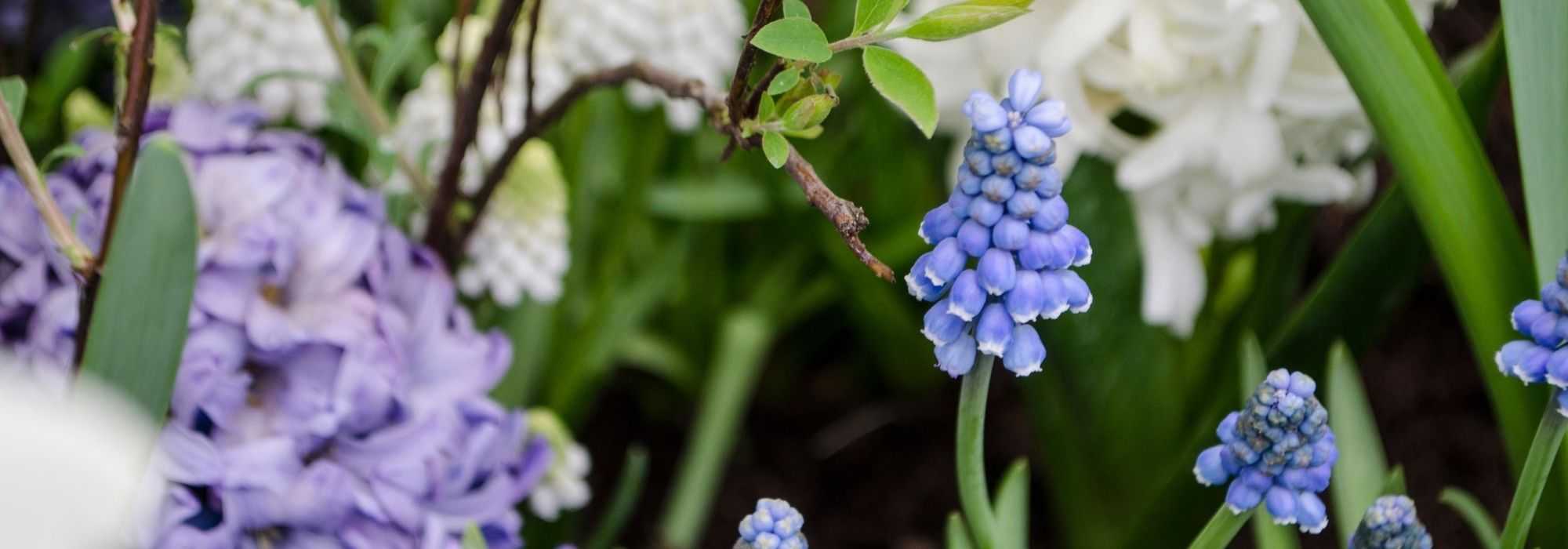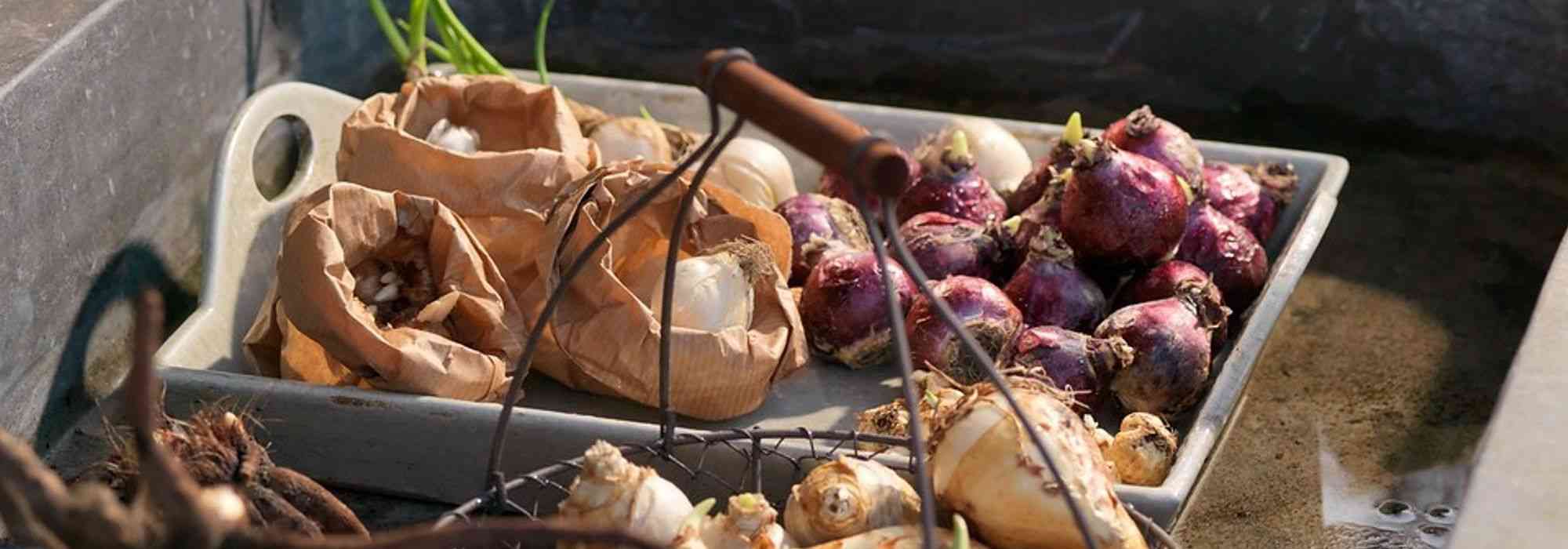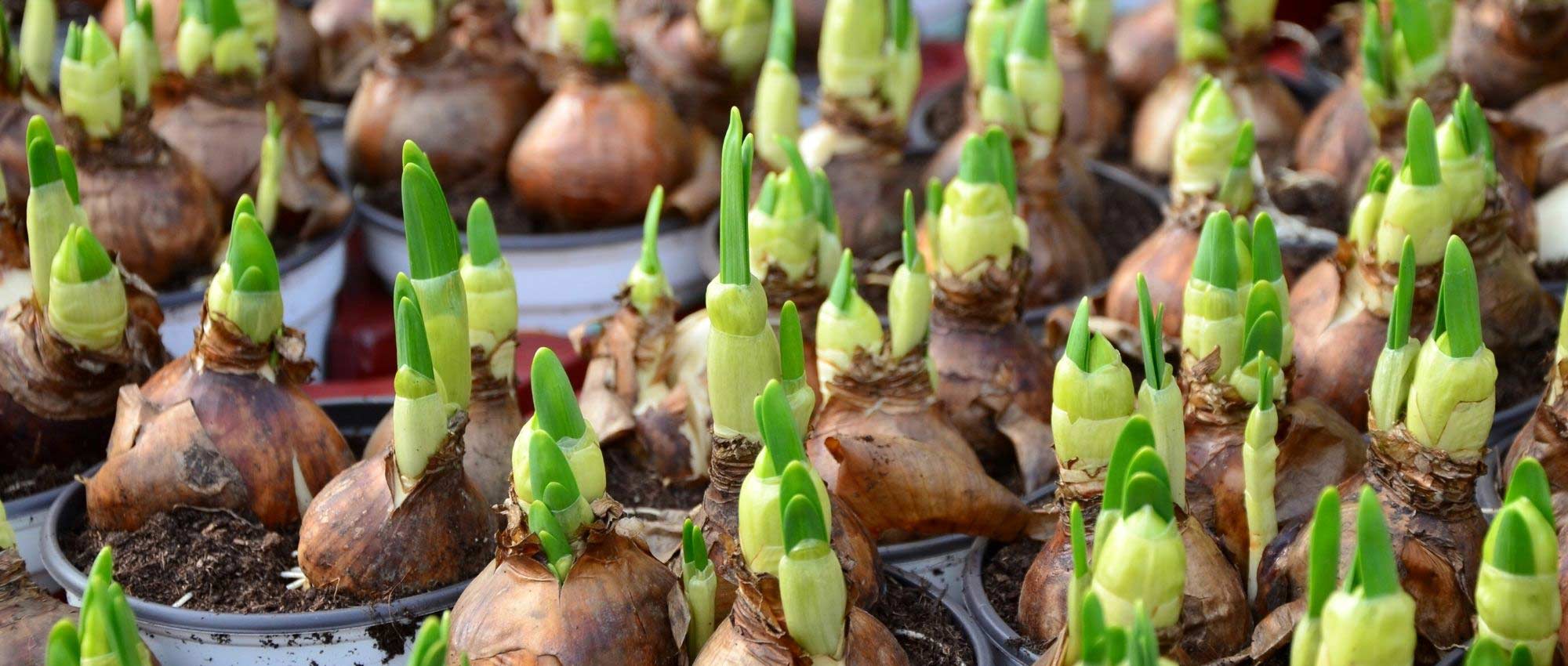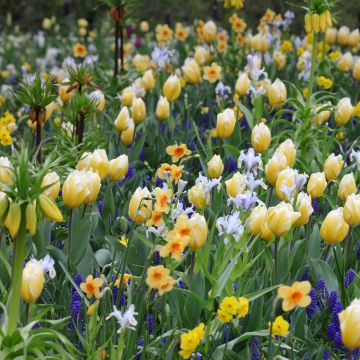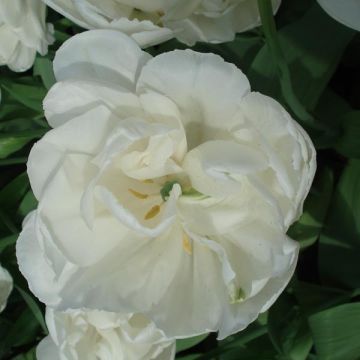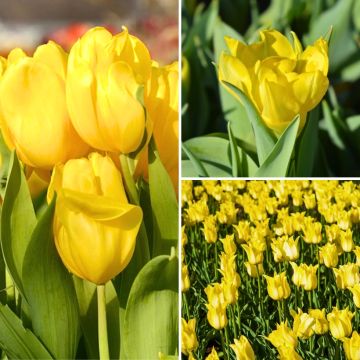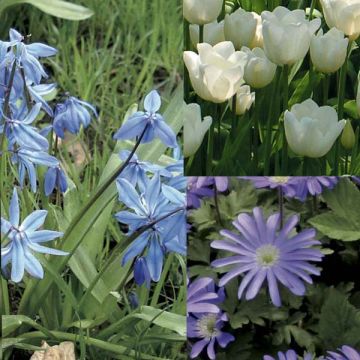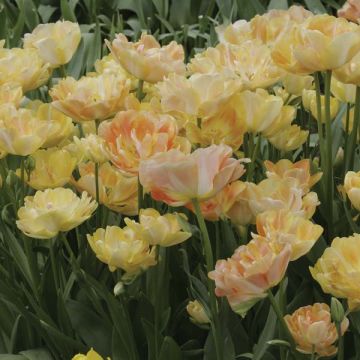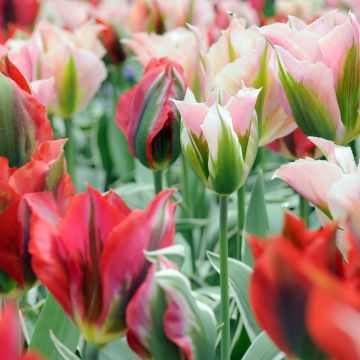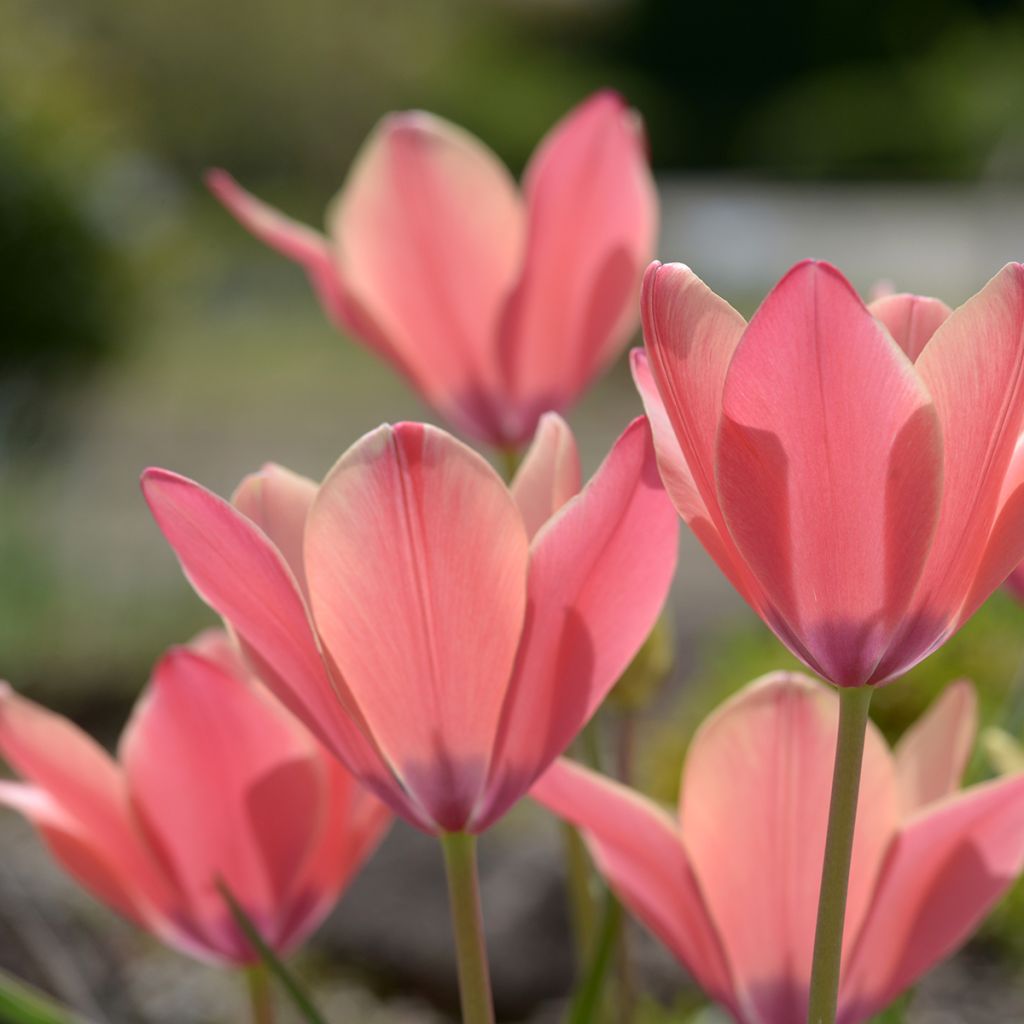

Tulipa clusiana Annika - Tulipe de L'Écluse, Tulipe de Perse, Tulipe-radis
Tulipa clusiana Annika - Lady tulip
Tulipa clusiana Annika
Lady tulip
Special offer!
Receive a €20 voucher for any order over €90 (excluding delivery costs, credit notes, and plastic-free options)!
1- Add your favorite plants to your cart.
2- Once you have reached €90, confirm your order (you can even choose the delivery date!).
3- As soon as your order is shipped, you will receive an email containing your voucher code, valid for 3 months (90 days).
Your voucher is unique and can only be used once, for any order with a minimum value of €20, excluding delivery costs.
Can be combined with other current offers, non-divisible and non-refundable.
Why not try an alternative variety in stock?
View all →This plant carries a 6 months recovery warranty
More information
We guarantee the quality of our plants for a full growing cycle, and will replace at our expense any plant that fails to recover under normal climatic and planting conditions.
Would this plant suit my garden?
Set up your Plantfit profile →
Description
The Tulip 'Annika' is a horticultural variety of Tulipa clusiana or the Persian Tulip, a botanical species widespread in southern Europe and the Orient. while being very hardy, this tulip flowers very well in warm climates and has retained the elegance of its wild relative. From March onwards, it produces beautiful salmon pink blooms that gradually evolve into an almost red fuchsia pink. This attractive bulbous plant naturalises readily in the garden, offering a beautiful spectacle early in the season.
The Tulip belongs to the Liliaceae family, once rich with around a hundred genera, but which following an evolution in systematics now only includes about a dozen. Lilies are well-known representatives, while others deserve to be more widely known, such as the superb Fritillaries. There are at least 120 species of Tulips worldwide, with their origin in Central Asia (Kazakhstan, Afghanistan, Pakistan). While the Tulipa gesneriana, or the Garden Tulip, is the most cultivated, other botanical species prove to be very ornamental. This is the case with the Tulipa clusiana which is found both wild and cultivated in central and southern Europe. Rare and protected, this very ancient species produces star-shaped, slender flowers borne on stems 25 to 30 cm high. The very graceful corollas are carmine red edged with white on the outside, and white on the inside with a violet heart. Truly aesthetic as it is, this wild species has given rise to several cultivars that have retained its natural grace while offering new colours.
The Tulip 'Annika' is thus a recent variety registered on the market in 2017 by the Dutch nursery W. van Lierop & Zn. B.V. More compact than the typical species, this variety forms flower stems about 20 cm tall above which flowers approximately 5 to 6 cm tall bloom. They form a beautiful harmony with the slightly bluish green foliage and open in shades of salmon pink. The centre of the corolla is marked with dark purple which enhances the beauty of the flower. Each bulb is capable of producing three flowers or more, which gradually turn to a fuchsia pink, sometimes tending towards red. Between March and April, the spectacle is both superb and changing, bringing a beautiful dynamism to the garden. Well adapted to warm climates, this Tulip does not require a great deal of winter cold to flower well. Its foliage formed of narrow, linear leaves appears in late winter and disappears again in late spring, after the flowering period, and before the intense heat. This ancestral cycle enables this variety to be integrated into a natural garden, especially as it will naturalise over time, forming large floral patches reminiscent of its natural settings.
The Tulipa clusiana 'Annika' will thrive in a border or rockery where its natural appearance will be fully at home. Its romantic charm and distinction will allow it to be combined with other bulbs like the Snowdrop S. Arnott which you can place in partial shade at the edge of trees, while your Tulip catches the sun further forward. Versatile and very cold-resistant, you can grow it in a pot and it will be just as happy in a Mediterranean garden with long, hot, dry summers. You can then integrate it into a dry garden alongside other sun-loving plants like Thyme, with its aromatic foliage available in different colours depending on the variety. A Pink Rockrose (Cistus skanbergii) will take over the flowering until June, and a few clumps of White Asphodel will reinforce the natural touch of your display with their tall spikes of white flowers in late spring and summer.
Plant habit
Flowering
Foliage
Botanical data
Tulipa
clusiana
Annika
Liliaceae
Lady tulip
Tulipa Annika
Cultivar or hybrid
Planting and care
Plant the Tulipa clusiana 'Annika' bulbs in autumn, from September to December, at a depth of 5-8 cm, spacing them 10 cm apart. Planting should be done in ordinary, slightly acidic, neutral, or even calcareous, light, loose, well-worked and above all well-drained, even sandy or silty soil. Never add poorly decomposed manure or compost to the planting soil as this could cause the bulbs to rot. The tulip will grow well in soil that is cool to dry in summer, which corresponds to its dormant period. Place it in a good, sunny position or possibly in partial shade.
After flowering, the foliage becomes faded and unsightly; we recommend planting Tiarellas, Brunneras, Euphorbia cyparissias, and Alchemillas in the foreground of your beds. Their foliage will enhance the colours of your tulips and later in the season, they will hide the yellowed leaves.
Tip for a carpet of blooms: you can create beautiful flowering displays around the house, in beds, around trees, or in wild areas. It is an economical and sustainable solution provided you follow a few principles:
1) It is a plant to be left in place.
2) Choose the varieties carefully according to the location.
3) A dormant period is essential after flowering for the bulbs to replenish themselves. Allow the foliage to yellow and dry before cutting it back.
4) Organic fertiliser should be applied once a year in autumn.
Planting period
Intended location
Care
Planting & care advice
This item has not been reviewed yet - be the first to leave a review about it.
Similar products
Haven't found what you were looking for?
Hardiness is the lowest winter temperature a plant can endure without suffering serious damage or even dying. However, hardiness is affected by location (a sheltered area, such as a patio), protection (winter cover) and soil type (hardiness is improved by well-drained soil).

Photo Sharing Terms & Conditions
In order to encourage gardeners to interact and share their experiences, Promesse de fleurs offers various media enabling content to be uploaded onto its Site - in particular via the ‘Photo sharing’ module.
The User agrees to refrain from:
- Posting any content that is illegal, prejudicial, insulting, racist, inciteful to hatred, revisionist, contrary to public decency, that infringes on privacy or on the privacy rights of third parties, in particular the publicity rights of persons and goods, intellectual property rights, or the right to privacy.
- Submitting content on behalf of a third party;
- Impersonate the identity of a third party and/or publish any personal information about a third party;
In general, the User undertakes to refrain from any unethical behaviour.
All Content (in particular text, comments, files, images, photos, videos, creative works, etc.), which may be subject to property or intellectual property rights, image or other private rights, shall remain the property of the User, subject to the limited rights granted by the terms of the licence granted by Promesse de fleurs as stated below. Users are at liberty to publish or not to publish such Content on the Site, notably via the ‘Photo Sharing’ facility, and accept that this Content shall be made public and freely accessible, notably on the Internet.
Users further acknowledge, undertake to have ,and guarantee that they hold all necessary rights and permissions to publish such material on the Site, in particular with regard to the legislation in force pertaining to any privacy, property, intellectual property, image, or contractual rights, or rights of any other nature. By publishing such Content on the Site, Users acknowledge accepting full liability as publishers of the Content within the meaning of the law, and grant Promesse de fleurs, free of charge, an inclusive, worldwide licence for the said Content for the entire duration of its publication, including all reproduction, representation, up/downloading, displaying, performing, transmission, and storage rights.
Users also grant permission for their name to be linked to the Content and accept that this link may not always be made available.
By engaging in posting material, Users consent to their Content becoming automatically accessible on the Internet, in particular on other sites and/or blogs and/or web pages of the Promesse de fleurs site, including in particular social pages and the Promesse de fleurs catalogue.
Users may secure the removal of entrusted content free of charge by issuing a simple request via our contact form.
The flowering period indicated on our website applies to countries and regions located in USDA zone 8 (France, the United Kingdom, Ireland, the Netherlands, etc.)
It will vary according to where you live:
- In zones 9 to 10 (Italy, Spain, Greece, etc.), flowering will occur about 2 to 4 weeks earlier.
- In zones 6 to 7 (Germany, Poland, Slovenia, and lower mountainous regions), flowering will be delayed by 2 to 3 weeks.
- In zone 5 (Central Europe, Scandinavia), blooming will be delayed by 3 to 5 weeks.
In temperate climates, pruning of spring-flowering shrubs (forsythia, spireas, etc.) should be done just after flowering.
Pruning of summer-flowering shrubs (Indian Lilac, Perovskia, etc.) can be done in winter or spring.
In cold regions as well as with frost-sensitive plants, avoid pruning too early when severe frosts may still occur.
The planting period indicated on our website applies to countries and regions located in USDA zone 8 (France, United Kingdom, Ireland, Netherlands).
It will vary according to where you live:
- In Mediterranean zones (Marseille, Madrid, Milan, etc.), autumn and winter are the best planting periods.
- In continental zones (Strasbourg, Munich, Vienna, etc.), delay planting by 2 to 3 weeks in spring and bring it forward by 2 to 4 weeks in autumn.
- In mountainous regions (the Alps, Pyrenees, Carpathians, etc.), it is best to plant in late spring (May-June) or late summer (August-September).
The harvesting period indicated on our website applies to countries and regions in USDA zone 8 (France, England, Ireland, the Netherlands).
In colder areas (Scandinavia, Poland, Austria...) fruit and vegetable harvests are likely to be delayed by 3-4 weeks.
In warmer areas (Italy, Spain, Greece, etc.), harvesting will probably take place earlier, depending on weather conditions.
The sowing periods indicated on our website apply to countries and regions within USDA Zone 8 (France, UK, Ireland, Netherlands).
In colder areas (Scandinavia, Poland, Austria...), delay any outdoor sowing by 3-4 weeks, or sow under glass.
In warmer climes (Italy, Spain, Greece, etc.), bring outdoor sowing forward by a few weeks.


































